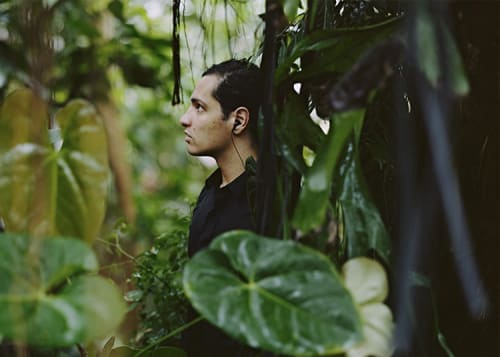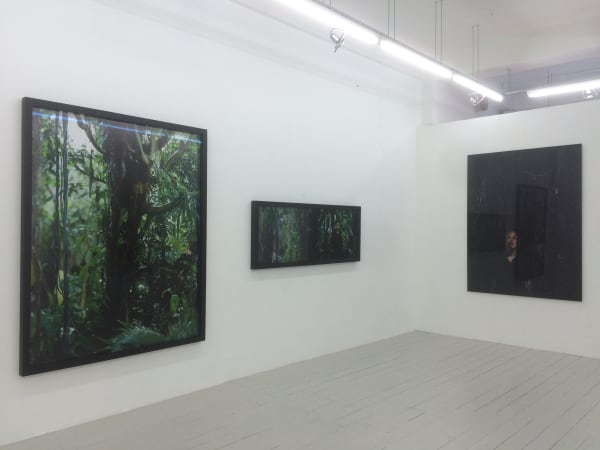Maria Friberg: Communicate Over Vast Distances
Past exhibition
Overview
|
Pi Artworks London is pleased to announce Maria Friberg's first solo exhibition with the gallery. Friberg belongs to a generation of Scandinavian artists who rose to fame in the 90's that are often referred to as the Nordic Miracle, a name coined in the late 90's after a seminal survey exhibition at the Musee d'art Moderne, Paris. For Communicate over vast distances, Pi Artworks has curated a selection of both new and older photographic and video works that will give a comprehensive overview of the artists' practice as well as underscore some of the broader themes that run through her work.
Maria Friberg creates pristinely composed photographic and video tableaus that capture individuals and small groups in inert, meditative states. These supine figures are engaged in distinctively passive and introverted actions, such as concentrating on their handheld technology, listening to music, asleep prone on a bed, or simply reclining in what appears to be a state of extreme apathy. Their blank, expressionless faces prevent the viewer from reading their emotions. Each figure lacks any visible physical or emotional interconnectedness with anyone else while simultaneously appearing completely at ease with his or her surroundings. The settings, which act as the backdrop for Friberg's men, women and children, vary from the inexplicable stacks of crushed cars in Still Lives [2005], to the dense and luscious Botanical Garden in Days of Eyes[2014]. Each is a serene and dreamlike context that is unpopulated other than with the works' subject or subjects and is a peculiar place to find someone at complete ease with themselves. Friberg shuns the use of digital technology to fabricate or manipulate her work, instead, each setting is located and objects arranged through a lengthy set-up process. She also uses ordinary people as opposed to actors for her subjects. For the artist, who originally worked as a painter, the people and objects are her material, and she wants to manipulate and arrange them physically as opposed to simply rendering them on a screen. This lack of digital manipulation and experienced models creates a spontaneity during the production processes that generates visual variations of the artist's original plan as well as allows the images to contain a visceral sense of the real places and objects they contain. Over the last 20 years, technological advancements have provided us with tools that have profoundly increased the extent to which we are able to interact and communicate with each other as well as help us record information and store it as part of a collective memory. Thus, we now have the ability and freedom to communicate what we are doing and what we have done how and when we want, increasingly ingraining ourselves in a hyper-connected but at times more physically isolated landscape. This is not necessarily a new phenomenon, as Friberg notes, photographs of public transport interiors from half a century ago often show people reading newspapers in solitude in a scene analogous to that of today. It is however a phenomena that is rapidly increasing in scale and extension. While some people adapt to this increasingly networked landscape, utilizing platforms that allow them to live parallel digital lives, those without the correct capabilities are left alienated. Either way, physical isolation is intensified. Friberg's work explores this key characteristic of the contemporary cultural condition of the western world. In their solitude, her tender subjects seem to find their place in this frenetic interconnected and fast-paced world by jettisoning perpetual connectivity and finding a moment of profound stillness amongst the chaos. Maria Friberg's solo exhibitions this year include, Maria Friberg at Alingsås konsthall, Alingsås, Sweden; Artphilein collection on display: Maria Friberg at Choisi Cultural Association, Lugano, Switzerland; Between solitude and belonging at Connersmith, Washington, DC, USA; and Maria Friberg at Bohusläns Museum, Uddevalla, Sweden. Also in 2014, she was commissioned to make a new work by the Hasselblad Foundation, Gothenbeurg in honor of Erna Hasselblad. She was previously had solo exhibitions at Kulturhuset Borgen, Gislaved, Sweden; Fotografiska Museet, Stockholm, Sweden; Galeria Galica, Milan, Italy; and Galerie Voss, Düsseldorf, Germany. Her works can be found in private and public collections such as those of the Denver Art Museum, Denver, CO, USA; European Central Bank, Frankfurt, Germany; Museum of Fine Arts, Boston, MA, USA; The Elizabeth A Sackler Center for Feminist Art, Brooklyn Museum of Art, NY, USA and the Fotomuseum Winterthur, Switzerland, among others. |
Installation Views



